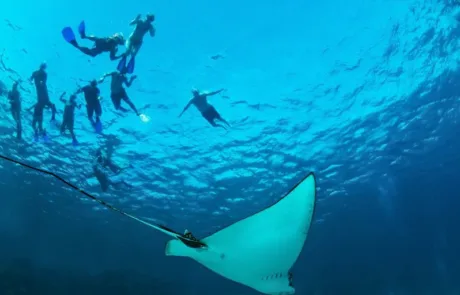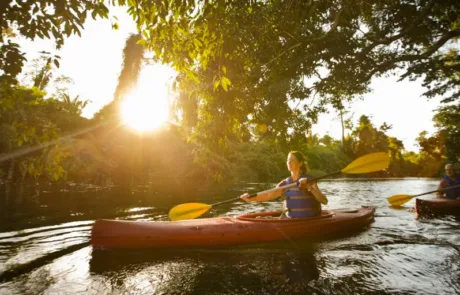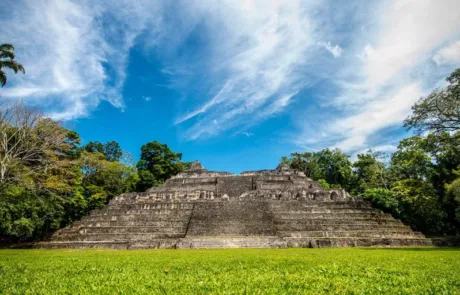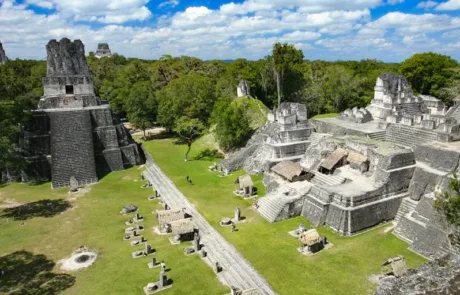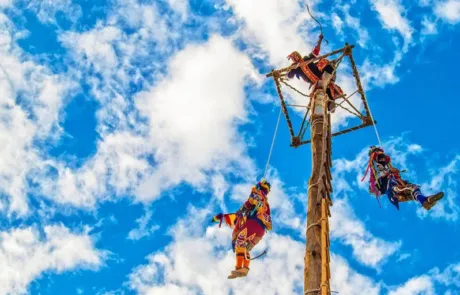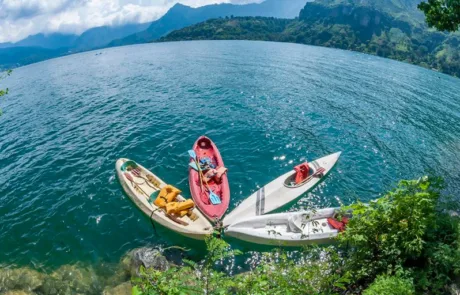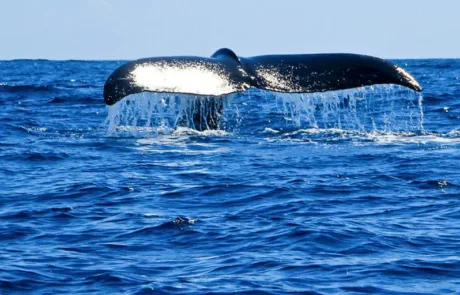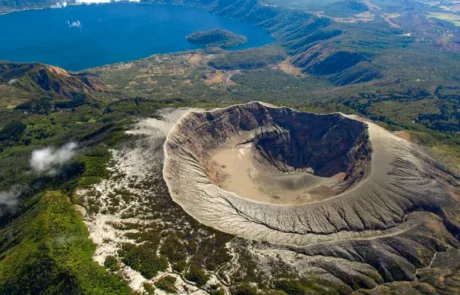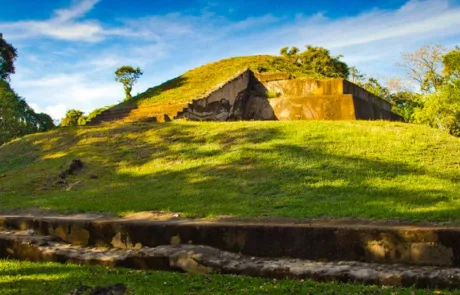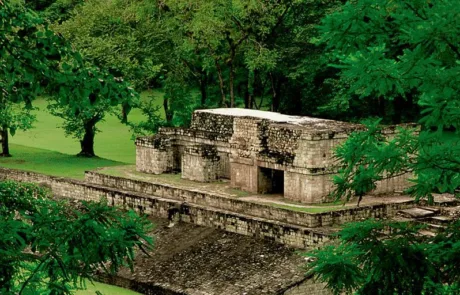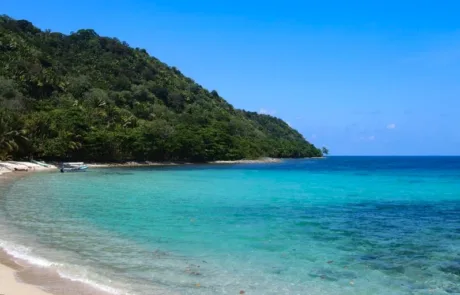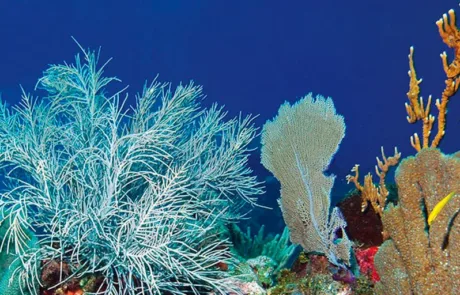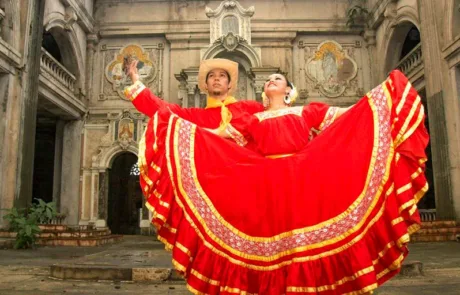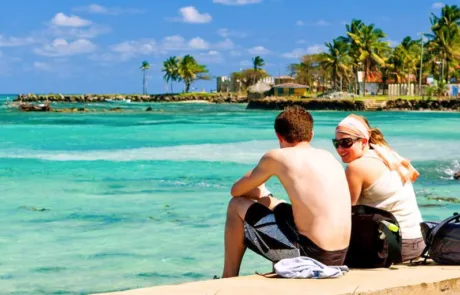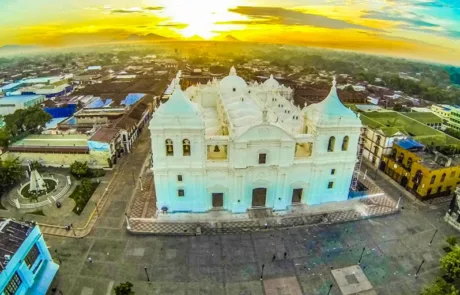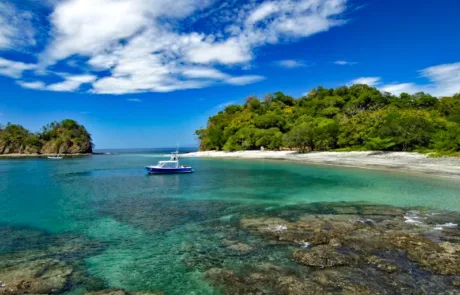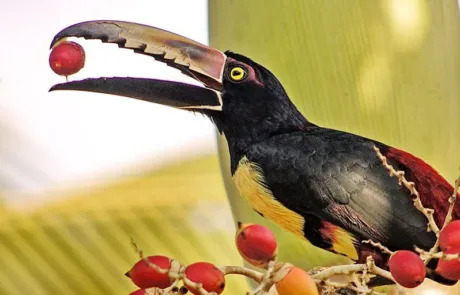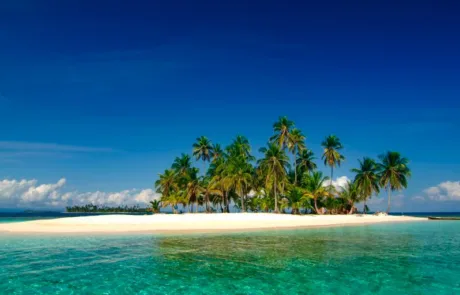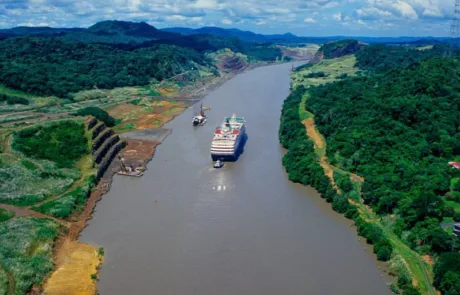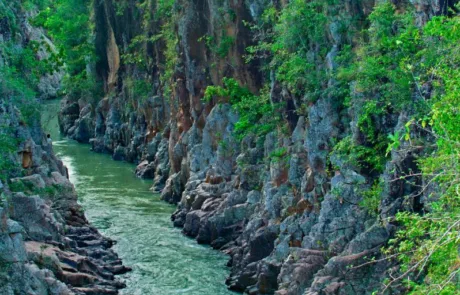Central America is the portentous and small arm of 522,762 km² of land that unites North America with South America. Central America is comprised of seven sister nations: Belize, Guatemala, El Salvador, Honduras, Nicaragua, Costa Rica and Panamá. Colonization, slavery, and immigration have played an important role in the ethnic modification of the population, and as a result, Central America is a fusion of numerous cultures, ethnic groups, languages and traditions. The region is synonymous with passion, mysticism, culture, sun, beach, sand, richness and volcanic heat, with populations whose lineages come from old and varied cultures, which when merged with Europeans and Africans generated the rich fusion that makes it a unique and incomparable region.
Central America allows travelers to experience a diversity of complementary destinations, where each experience satisfies a different desire. The region is ideal to undertake a multi-destination trip where travelers find a combination of attractions, services, and interconnectivity that will enrich the experience of their journey. This diversity that characterizes it is seen in its unique spirit that moves within its cadences, and sometimes nostalgic rhythms, the solemnity of its rituals, its religious syncretism, its gastronomic legacy, and the myths and legends inherited from ancestral voices from Africa, pre-Hispanic America, and Europe, in a single aroma and flavor.
This paradise concentrates imposing and wild forests full of birds and wildlife; an inscrutable and powerful tangle of portentous and mighty rivers, arteries that make their way from their blessed sources to the magnificent craters; waterfalls and lakes that find their way to the oceans that bathe the Central American coasts full of pristine beaches awaiting discovery; and, archaeological sites that show part of the splendor of ancient cultures.
Discover Central America from its distinctive areas and dimensions: cultural, natural, mystic, romantic, educational, sporty, and adventurous. After being among us you will understand why we affirm: “Central America Small Countries… Great Experiences.”
Belize
Located on the northern Caribbean coast of Central America, Belize has a population of approximately 380,000 inhabitants. Its capital is the city of Belmopán, and the most populated city is the City of Belize. The encounter between the Caribbean natives and the Africans who were taken to Belize as slaves by the European colonizers, gave birth to a new ethnic group: the Garífuna. Belize was part of the Mayan Empire that extended from southern Mexico to Guatemala and Honduras. Later, it was explored by the Spanish, and then colonized by the British Empire until its full independence in 1981. Belize is part of the important Mesoamerican Biological Corridor, with great biological diversity, in both marine and mainland territories. The Caribbean coast is bordered by coral reefs and some 450 islets and islands locally known as “cayes”. Three of the four coral reefs of the Western Hemisphere are off the coast of Belize. It is the only country in Central America where English is the official language, being a former British colony, although Spanish, Belizean Creole, and to a lesser extent, Mayan, Arawak, and Garífuna are spoken. Bilingualism is very common and encouraged. The majority of the population professes Catholicism, and British influence has brought considerable and varied Protestant congregations, including German and Swiss Mennonites.
Guatemala
Located in the northern most part of western Central America, the Republic of Guatemala has an approximate population of 15,700,000 inhabitants, and a wide native culture product of the Mayan heritage and Spanish influence during the colonial era. Its capital is the City of Guatemala, officially called “Nueva Guatemala de la Asunción”. In spite of its relatively small territorial extension, Guatemala has a great climatic variety, product of its mountainous relief, reaching a height of up to 4,220 meters above sea level. Spanish is the official language, although it is used as a second language by some ethnic groups in other parts of the country. There are also twenty-one Mayan languages, in addition to the Xinca and Garífuna languages, the latter spoken by the Afro-descendant population in the Caribbean department of Izabal. The current Guatemalan culture is the result of the numerous Mayan, Spanish, Afro-Caribbean, Mexican and, to a lesser extent, American influences, as well as from the rest of American countries. The influence of the Indians and Spanish settlers can still be seen throughout Guatemala. The “typical” fabrics and some traditional clothes are made in a traditional Mayan way, however, the transculturation has had its influence in their clothes, mainly in the young indigenous population. In Guatemala you can also find important archaeological sites with Mayan ruins.
El Salvador
Located on the Pacific coast of Central America, the Republic of El Salvador, with an approximate population of 6.5 million inhabitants, is the smallest country in Central America and the most densely populated of the entire American continent. Its capital is San Salvador, the largest city in the country. Known as the Land of Volcanoes, El Salvador is full of ancestral traditions and customs from pre-Hispanic cultures that fused with Spanish customs.
Honduras
The Republic of Honduras, situated in the center of northern Central America, has a population of approximately 8.7 million inhabitants. Its capital is Tegucigalpa. The territory of Honduras is very rugged, formed by high rows of mountains, high plains, and deep valleys with extensive and fertile plains crossed by large rivers, which contributes to its rich biodiversity. Its privileged location between two oceans, and its topographic conditions, create a great variety of habitats, from cloud forests to coral reefs, favorable for a high diversity of flora and fauna. Honduras is a multi-ethnic, multicultural, and multilingual country, with four large ethnic families: the whites or mestizos who are the majority, the indigenous peoples (Lencas, Misquitos, Tolupanes, Chortis, Pech, Tawahkas), the Garífunas, and the English-speaking Creoles. Although Spanish is the official language of Honduras, the Constitution is committed to preserving and promoting native cultures.
Nicaragua
Located in the geographic center of the Central American isthmus, the Republic of Nicaragua has a multiethnic population estimated at 6.3 million inhabitants. Its capital is Managua. Inhabited by pre-Columbian populations, the Pacific Ocean coast, and part of the central region of Nicaragua’s current territory, were conquered by the Spanish, while on the Caribbean coast, the British colonial rule was established. Nicaragua is a volcanic and tropical country, housing in its interior two great lakes: Lake Xolotlán, and Lake Cocibolca or “Great Lake of Nicaragua”. Its privileged location makes the country a hostel of vast biodiversity. Spanish is the official language, although the languages of native indigenous peoples such as Creole Nicaraguan English, Misquito, Sumu or Sumo, Mayagna, Garífuna, and Rama are also recognized. Religion is an important part of Nicaraguan culture, with Catholicism being the predominant religious denomination, followed by Protestantism.
Costa Rica
The Republic of Costa Rica has an estimated population of 4.8 million inhabitants. Its capital, political, and economic center is San José. The territory of Costa Rica is a narrow strip of land surrounded by two oceans, and is the country with the greatest biodiversity on the planet per square kilometer of territory. It is a very mountainous country, and most of the territory is formed by elevations between 900 and 1,800 meters above sea level. The Costa Rican culture has indigenous, European, Afro-Caribbean and Asian influences, with the predominant religion being Christianity. Its cultural features have been marked by its position on the isthmus, as a bridge between two large continental masses, generating a line of passage of all kinds of trends and influences. Although Spanish is the official language, five native languages are also spoken: Maleku, Cabécar, Bribri, Guaymí and Bocotá. In the Caribbean area of the country, Mekatelyu, academically known as Limón Creole English, is spoken.
Panama
Located in the southeastern part of Central America, the Republic of Panama has a population of over four million inhabitants. More than 70% of Panamanians live in urban areas, and half of them in the City of Panama, its capital. Panama is the most southern country of Central America, and one of the most biodiverse, formed mostly by lowlands. Its condition as a transit country made it an early meeting point for cultures from all over the world.
The country is the geographical scenario of the Panama Canal, a structure that facilitates communication between the coasts of the Atlantic and Pacific oceans. Spanish is the official language of the country, and the Ngäbe, Buglé, Kuna, Emberá, Wounaan, Naso Tjerdi and Bri Bri indigenous languages are also recognized as official. English is the foreign language of greatest use and demand, and is spoken by Afro-Antilleans of the Atlantic coast of the country, and in the city of Panama. Because of its cultural diversity, a wide range of religions are practiced in the country; however, the Catholic religion is the predominant one.
